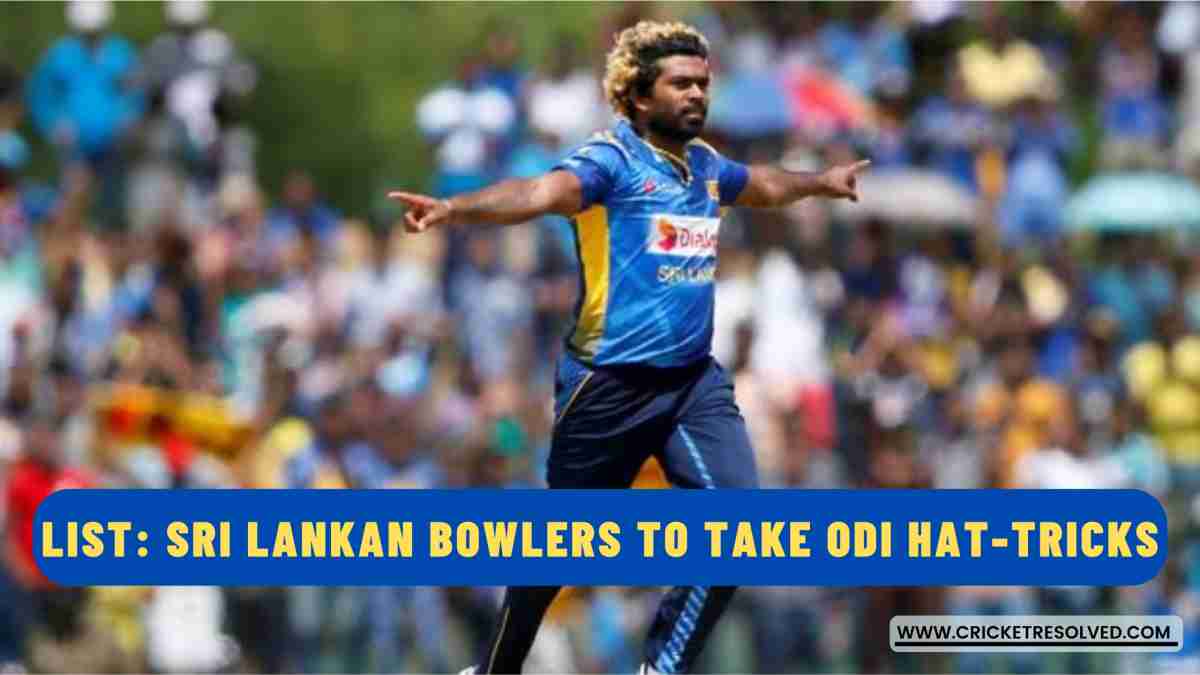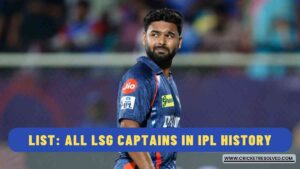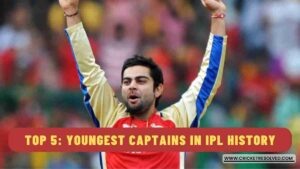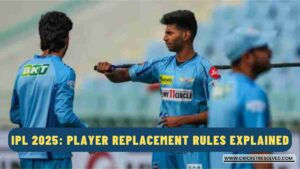
A bowler taking three wickets off three balls isn’t something we see quite often. It takes a bit of skill and luck to pull off this rare feat known as a hat-trick.
There have been a few Sri Lankan bowlers, though, who managed to rack up hat-tricks in ODI cricket. A couple of them did it multiple times, which highlights their mastery with the white ball.
So here are the Sri Lankan bowlers who have taken hat-tricks in ODI cricket.
1. Chaminda Vaas
Chaminda Vaas’ top-class bowling against Zimbabwe in the first match of the 2001 triangular series turned into a record-breaking affair. After electing to bowl first, Vaas created mayhem on the Colombo wicket.
The left-arm pacer became the first Sri Lankan to inflict an ODI hat-trick. At the start of the 11th over, Zimbabwe were 26 for three, with Vaas taking all those wickets.
But by the end of the over, they were in shambles on 27 for six! Vaas dismissed Stuart Carlisle, Craig Wishart, and Tatenda Taibu on consecutive balls to register Sri Lanka’s first ha-trick.
He added two more scalps in his next two overs, taking his figures to eight for 19, which is still the best in this format. His bowling performance curtailed Zimbabwe to 38, which Sri Lanka chased down in 4.2 overs.
Vaas racked up another hat-trick 14 months later, this time in the 2003 World Cup. And his second hat-trick was even more special as he dismissed three batters on the first three balls of the match.
The former pacer achieved this feat against Bangladesh, sending Hannan Sarkar, Mohammad Ashraful, and Ehsanul Haque back on the first three deliveries. He picked up three more wickets, helping wrap up Bangladesh for 124, which Sri Lanka chased without dropping a wicket.
2. Lasith Malinga
Lasith Malinga joined Vaas on this list with a rare hat-trick four years later. He dismissed South Africa’s four batters in four consecutive balls, taking the first-ever double hat-trick in international cricket.
The slingy bowler did so in the 2007 ODI World Cup. South Africa were just four runs away from a win, but Malinga decided to add a twist.
He dismissed Shaun Pollock and Andrew Hall on the last two balls of the 45th over before getting Jacques Kallis and Makhaya Ntini out on the first two deliveries of the 47th over. Malinga’s late brilliance almost brought Sri Lanka back in the game, but South Africa won it with a wicket to spare.
His second and third hat-tricks came in the same year and at the same venue. In the 2011 World Cup, the right-hand pacer dismissed Kenya’s tail on his three consecutive balls across two overs.
On the last ball of the 42nd over, Malinga trapped Tanmay Mishra while he returned with two scalps of Peter Ongondo and Shem Ngoche in the 44th over. Three balls later, he took the last wicket to wrap up Kenya for 142 runs.
Five months later, Malinga logged his third ODI hat-trick against Australia. This time as well, he targeted the tail, sending batters back with his yorkers and low full tosses.
Slinga Malinga bowled out Mitchell Johnson, trapped John Hastings LBW, and bowled out Xavier Doherty to complete the hat-trick in the 46th over.
3. Farveez Maharoof
In between Malinga’s hat-tricks, Farveez Maharoof found his name added to this list. The former right-arm fast bowler racked up three wickets off three balls against India in the 2010 Asia Cup.
India were struggling at 189 for five after 38 overs, having lost MS Dhoni to a run out on the last ball of the over. Then Maharoof added more salt to the wound, dismissing Ravindra Jadeja, Praveen Kumar, and Zaheer Khan on the first deliveries of the 39th over.
The sudden wickets changed the momentum of the game, with India getting bowled out for 209, which Sri Lanka gunned down easily.
4. Thisara Perera
After being part of Dan Christian’s hat-trick in March 2012, Thisara Perera grabbed his own achievement three months later. In an ODI against Pakistan, Sri Lanka were defending 244 runs, with the visitors batting at 176 for four.
Then Mahela Jayawardene brought Perera into the attack, who got to work right away. The right-armer dismissed Younis Khan, Shahid Afridi, and Sarfaraz Ahmed in the 41st over, ending Pakistan’s hopes of chasing the target.
Four overs later, Perera skittled Pakistan’s innings on 199, helping Sri Lanka win by 44 runs.
5. Wanindu Hasaranga
Wanindu Hasaranga is one of Sri Lanka’s best spinners right now. The leg spinner impressed everyone on his ODI debut in 2017 by taking a hat-trick.
In a match against Zimbabwe in Galle, Hasaranga bundled the visitors on 155 with his three late strikes. He deceived Malcolm Waller, Donald Tiripano, and Tendai Chatara with his arm ball and googly on consecutive balls to go down in the record books in his very first match.
6. Shehan Madushanka
Five months later, Shehan Madushanka imitated Hasaranga’s feat. Playing in his debut ODI against Bangladesh, the right-arm pacer helped Sri Lanka win the 2018 triangular series final.
Bangladesh were struggling at 141 for six in the 40th over and were one batter down. Then Madushanka dismissed Mashrafe Mortaza and Rubel Hossain on the last two deliveries of the over, reducing them to 141 for eight.
Madushanka completed his hat-trick on the first ball of the 42nd over, getting Mahmudullah caught out to end Bangladesh’s chase on 142 runs. Interestingly, this was the only ODI match Madushanka played in his career.
7. Maheesh Theekshana
Maheesh Theekshana became the latest entrant to this elite list. In a rain-curtailed match against New Zealand, the off-spinner racked up his hat-trick towards the end of the first innings.
It was a 37-over per side game, with the Kiwis cruising at 247 for five in the 35th over. Then on the last two balls, Theekshana got Mitchell Santner and Nathan Smith caught out.
He returned to bowl the last over of the innings and dismissed Matt Henry on the first ball, completing his hat-trick. With that, Theekshana became only the second Sri Lankan spinner to achieve this feat in ODIs.
The off-spinner’s hat-trick, though, ended in a losing cause as Sri Lanka failed to chase New Zealand’s 256-run target.
Read Next | 5 Youngest Indian Batters to Score a Test Century in Australia






